Our Sunday floral story : Flowers for those who want to see them
Kate Friend on a flower pilgrimage with lifechanging divine floral intervention
When you look at this portrait of an Angelica, do you merely see an umbellifer bloom as if picked from our own country roads and stylishly shot yet minimally framed by the green colour of hope. Kate Friend is asking you to question more.
Flowers are how I understand cyclical time, and my own place in the perpetual universal cycle. Through flowers I discover restraint, humility, mortality, transcendence. The tension between the seen and the unseen, permanence and transience, magnificence and simplicity. Their beauty is deeply cathartic. In my work I try to do justice to that beauty, to that moment, and to the tenuousness of our time. I am inspired by Aldous Huxley’s description of flowers as ‘a bundle of minute, unique particulars in which, by some unspeakable and yet self-evident paradox, was to be seen the divine source of all existence - Kate Friend

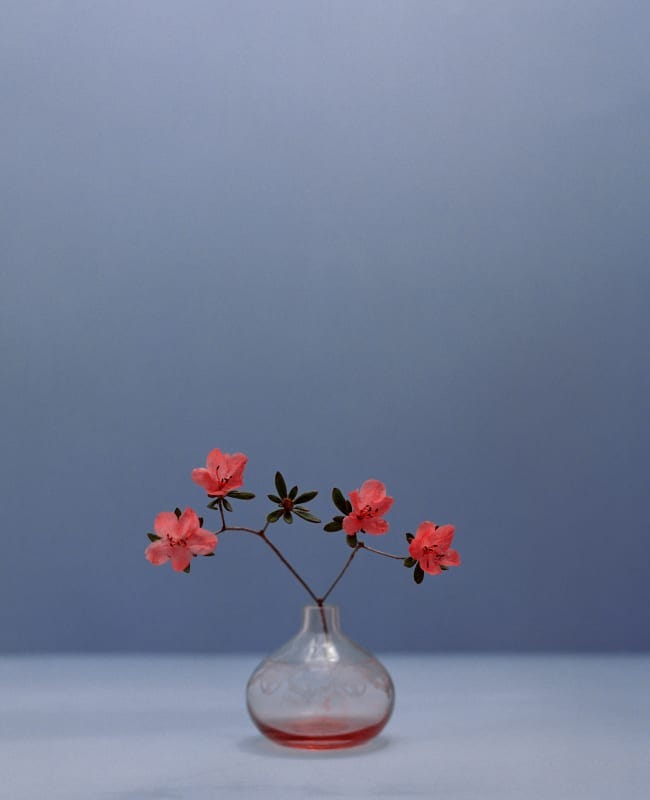
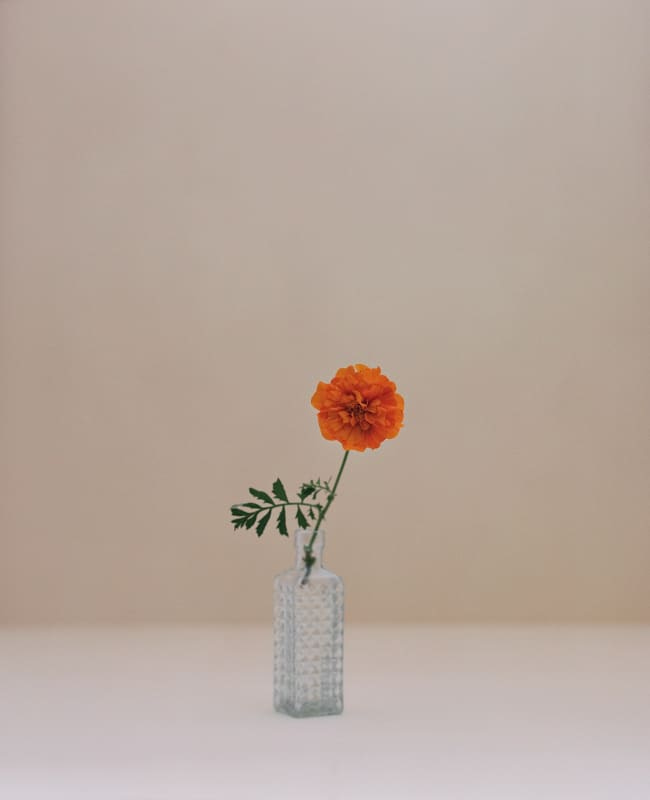
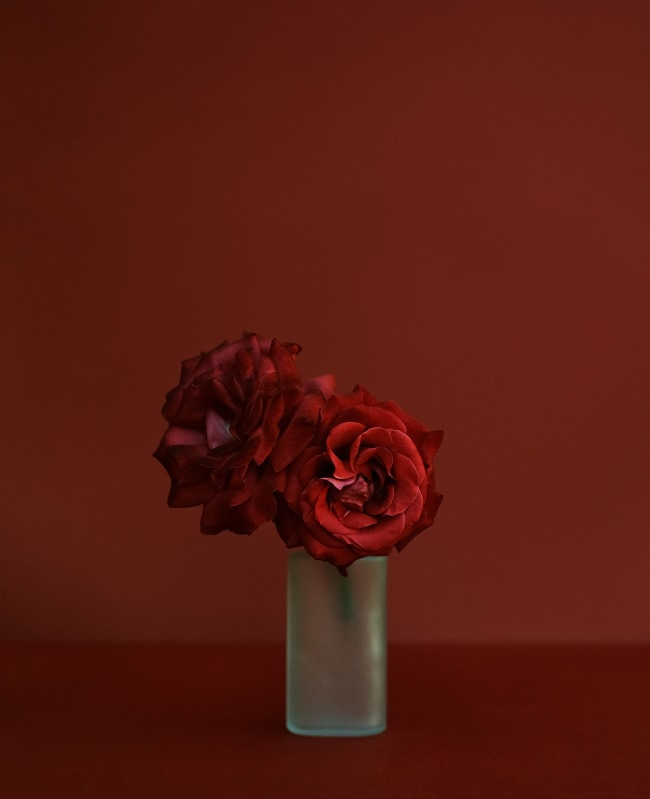
Kate Friend, an English photographer based in Lisbon has just concluded her exhibition "There are always flowers for those who want to see them" at the Lyndsey Ingram Gallery in London this weekend. However, I had come across her exhibition whilst recently reading The New Yorker and I wanted to know more.
THERE ARE FLOWERS FOR THOSE WHO WANT TO SEE THEM FOR DEFINITE :
Her show, a series of 24 floral portraits captures flowers growing wild at 4 different Vatican approved Marian apparition sites (Knock has been approved as one). These are locations where Mary was supposed to have appeared in the nineteenth century and that have been approved by Popes through the years.
‘It has been extraordinary to experience the release of this work at the same time as the passing of Pope Francis & the election of Pope Leo XIV. Quotes from the Conclave keep coming to mind ‘Certainty is the great enemy of unity. Certainty is the deadly enemy of tolerance” - Kate Friend
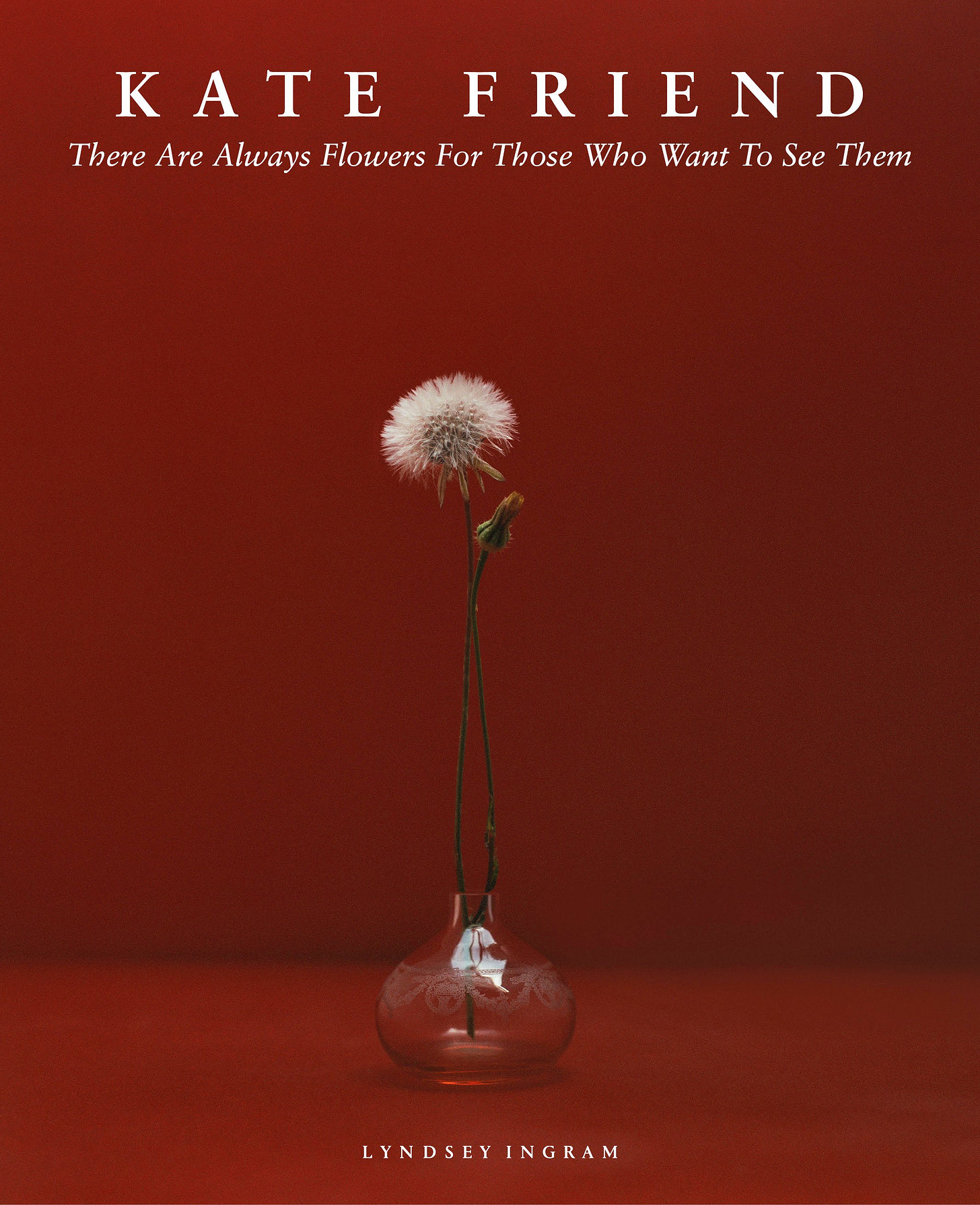
How timely when we all have become educated in conclave matters & were glued to all screens big and small as white smoke wafted upwards in Rome. How suited her floral pilgrimage was made public during the month of May, known to most as the month of Mary. In fact, I recently had to attend a Mass and it was so lovely to hear the hymn : one I had not heard since my schooldays some time ago.
Bring flowers of the rarest, Bring blossoms the fairest,
From garden and woodland and hillside and dale;
Our full hearts are swelling, Our glad voices telling
The praise of the loveliest flower of the vale!
O Mary we crown thee with blossoms today! Queen of the Angels and Queen of the May.
O Mary we crown thee with blossoms today, Queen of the Angels and Queen of the May.
A digression. It would be too simple to tell you that Kate simply shot portraits of single native flowers from four of the visitation locations and that her pilgrimage themed photography produced beautiful images. Friend's process included her commissioning six versions of a portable 'reliquary' (a gold open-fronted box, usually used to host relics and more in Catholic churches). She created six coloured backdrops in the liturgical colours of the Catholic Church :
Green - Life, Hope, Anticipation
Purple - Penance, Sacrifice
Preparation Red- God’s love, Blood, Fire
Celebration of Martyrs Blue - Constancy
Fidelity Rose - Joy White
Purity Gold - Light, Glory.
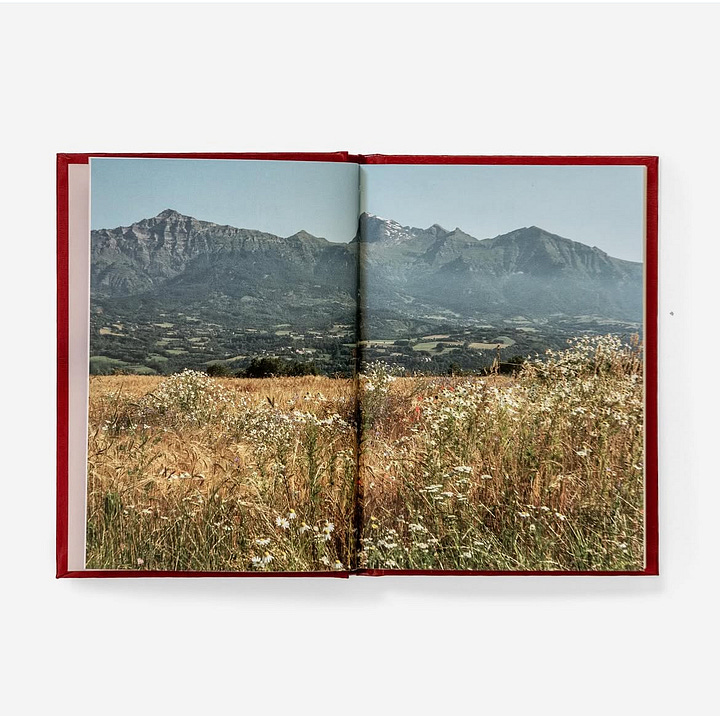
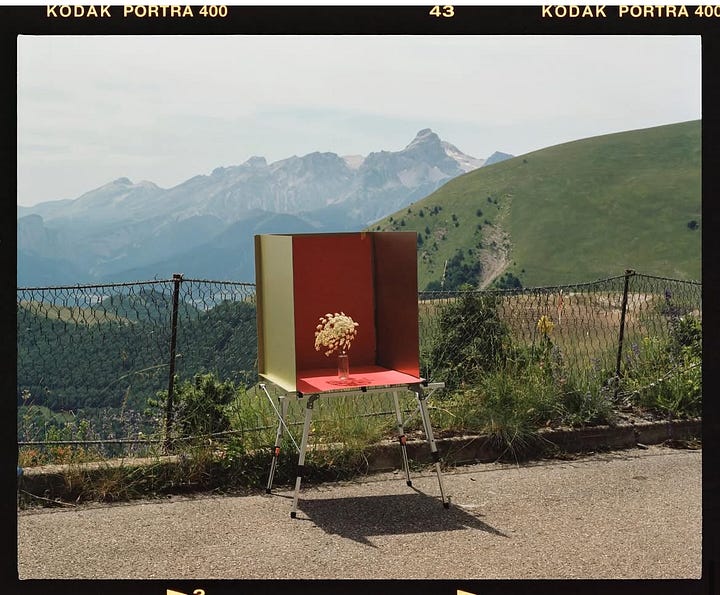
Each piece is titled with the flower name, the location from where it was found and the time of year. The 24 works refer to the biblical interpretation of 24 as a symbol of Divine order. The title comes from Henry Matisse's book 'Jazz' published in 1947.
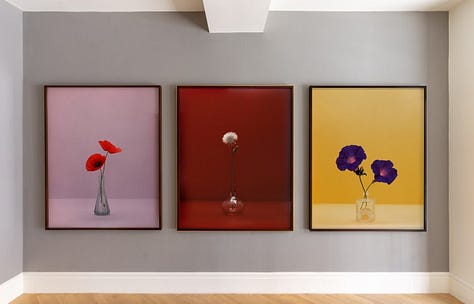
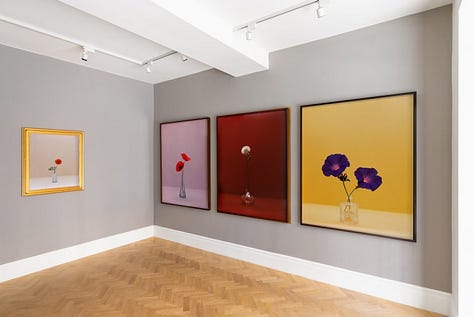
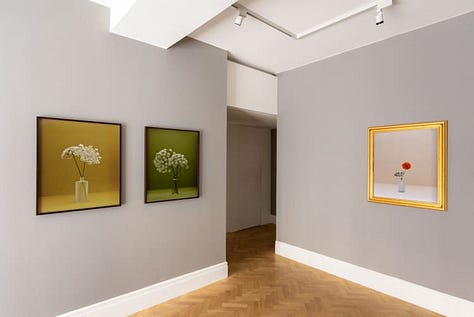
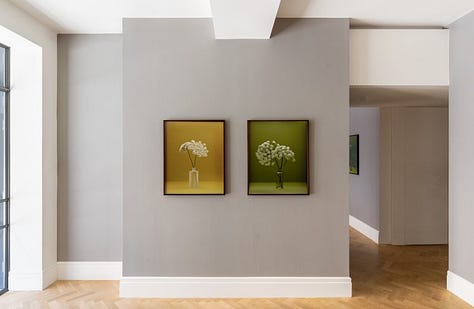
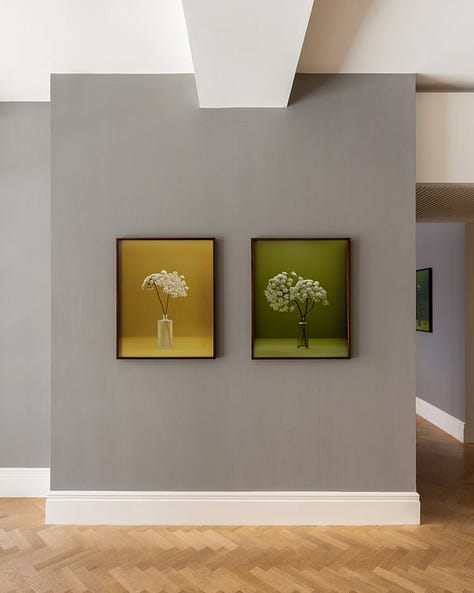
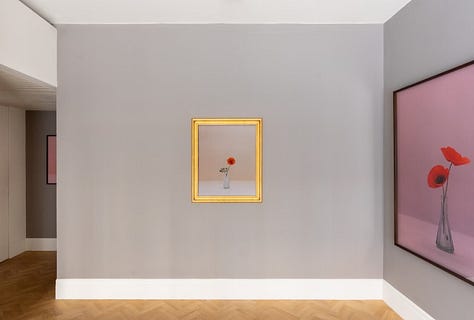
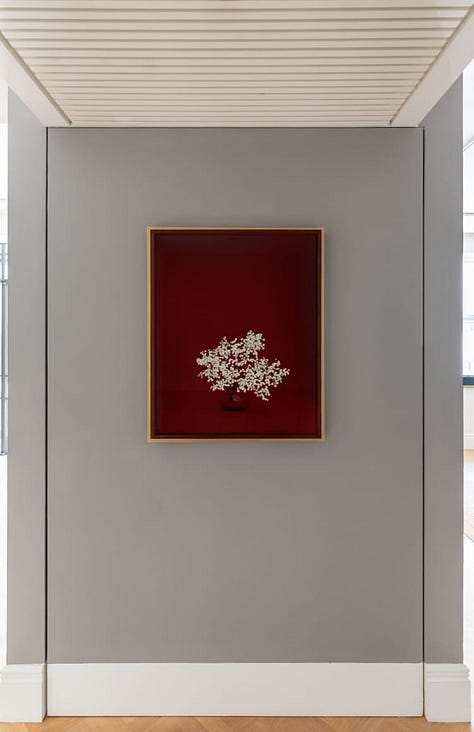


Her four pilgrimages were to the following places :
Fátima, Portugal,
Notre-Dame du Laus, France,
La Salette-Fallavaux, France,
Basilica Parrocchiale di Sant'Andrea delle Fratte, Santuario Madonna del Miracolo, Rome, Italy.
The artist comments: I was curious about faith, influence, the power of apparitions, and the designation and worship of relics. I was drawn to the question of whether holy ground, visited by millions, could affect the flowers that grew there, and whether it could shape my work. I wanted to explore how a holy site can create a Damascene moment. I did not know when I began, the extent to which I would end up with a Damascene moment of my own.
Last July, Friend visited her final location, La Salette Fallavaux, a spectacular shrine in the French Alps, ringed with mountains and sky. It is a busy pilgrimage spot & was very hot that day, and as we all know, heat is not a friend to quickly picked wild flowers. The cowparsley/umbellifers were everywhere and she shot her piece speedily in a secluded carpark spot diffusing the heat with efferescent fabric just like the flowers from the other locations.
After packing up, Friend drove her rental car back down the Laffrey Descent, a renowned dangerous mountain road route. After passing by a resurfacing truck, her car skidded off the road, rolled over several times before being halted by trees. Though the windscreen was fully smashed, Kate managed to climb out unscathed. She was dressed in white. A passerby pilgrim was convinced she was an angel. It was a miracle that she and her camera survived in full.
This near-death experience combined with her floral captures from these holy places ask questions about whether her escape was a coincidence or miracle and creates a wondering about Divine intervention saving her life.
Since her accident, she has found it easier to connect to what is alive in a landscape, in a way that she finds hard to describe but which she understands flowers, in some way, to embody. “They’re the recipients of whatever’s in the earth,” Friend said. “They’ve got this kind of lifeblood in them.” - Sam Knight, New Yorker
The exhibition was accompanied by a pocket-sized book in red with gilded text filled with an essay by Emily LaBarge. This design refers to prayer books carried by soldiers in war as recently as in Ukraine where their faithful forms have stopped bullets and more preventing further anguish in the world.
Whether you are spiritual or holy or not, this exhibition reignites the mantra that all wildflowers Kate Friend captured, are there for us to see whether on a walk in your local wood or climbing mountains like Maria in The Sound of Music. I have put the flower meanings of each below using floriography from Shane Connolly’s ‘Discovering the Meaning of Flowers’ so you can decide. X
Dahlia - Dignity & Elegance
Gladioli - Love at First Sight
Angelica - You inspire Me
Sweetpea - Delicate Pleasures
Rose - Gentility & Purity
Scabious - Unfortunate Love
Red Valerian - Love & Strength
Ridolfia / Fennel - Strength & Force
Astrantia - Innocence & Strength
Azalea - Temperance & Womanhood
Oleander - Protection & Caution
Nasturtium - Joy, Creativity, Passion
Field Poppy - Remembrance
Queen Anne's Lace - Sanctuary & Safety
Marigold - Jealousy
Morning Glory - Affectation
Elderflower - Renewal & Rebirth
Star of Bethlehem - Wood Anemone - Reconciliation & Purity
SEE KATE FRIEND’S BEAUTIFUL EXHIBITION HERE


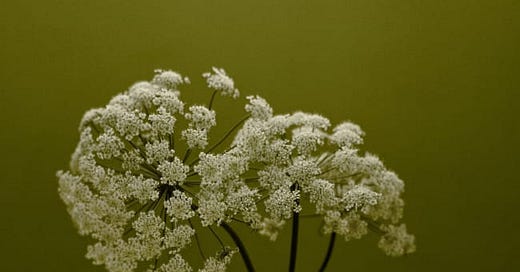



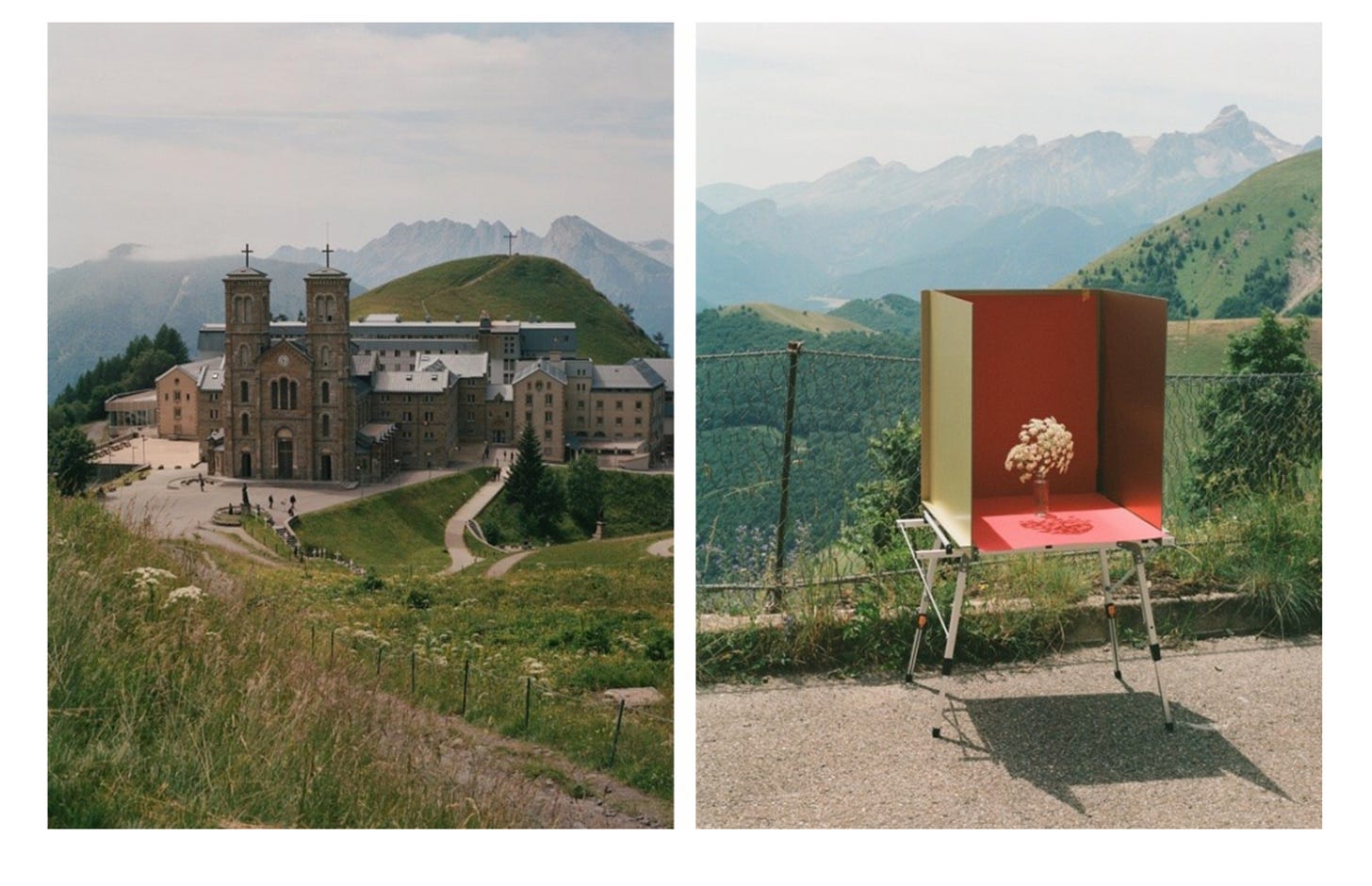

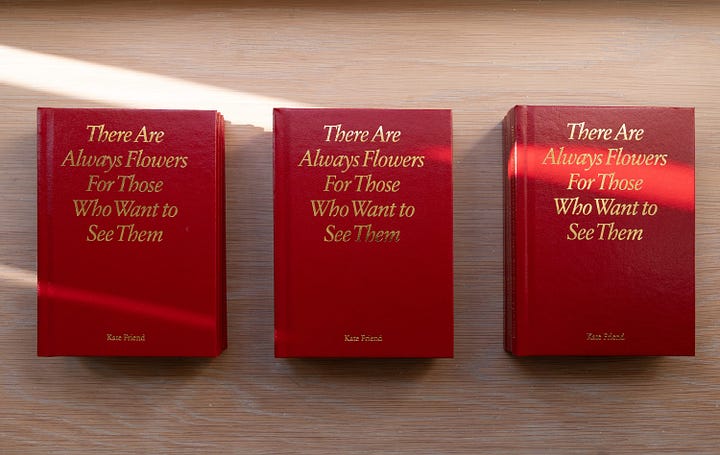
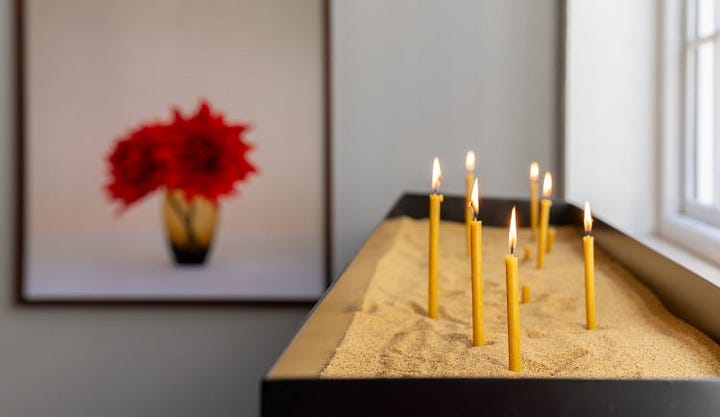
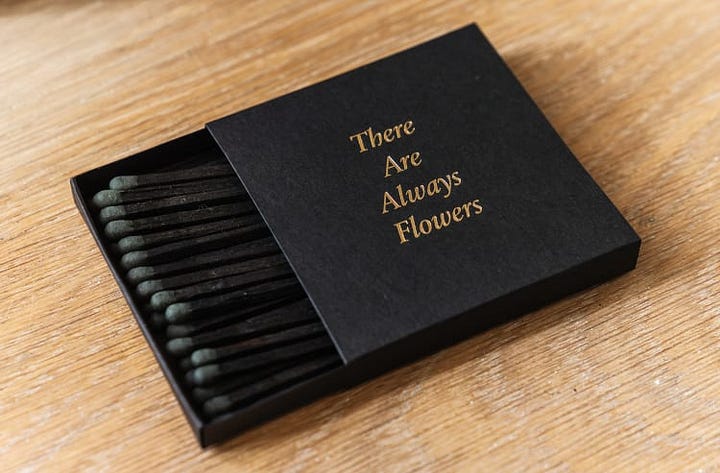
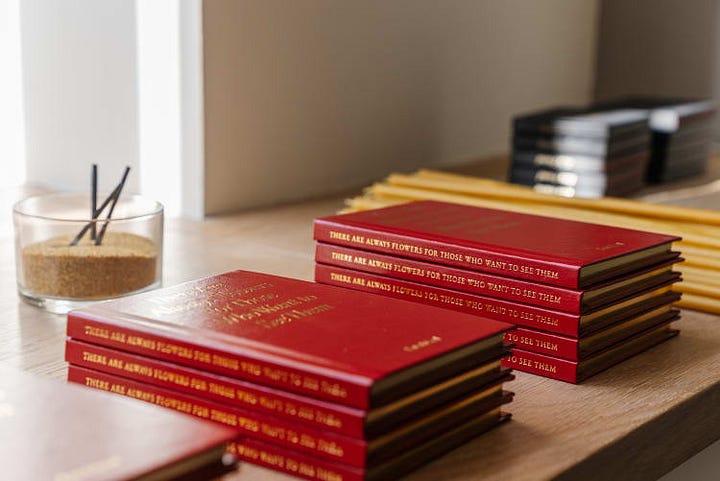
The story and the ‘behind the scenes’ is what I find so interesting about this exhibition. I would like to believe that divine intervention was behind saving Kate from death. Thank you for sharing.